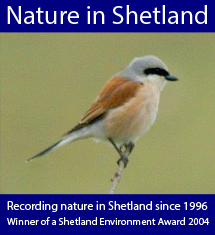Weekly round-up: 26 Sept - 02 Oct 2012
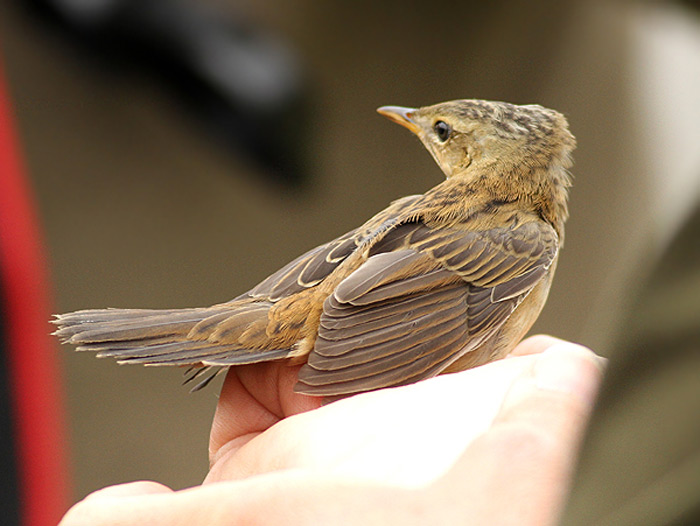
So much for wondering if this week may turn out to be a little quieter than the seven days that had just passed by….
It was, to be fair, a little less hectic, but there were still a whole heap of rarities to contend with ~ and Shetland, once again, suggested that nowadays, it really is the place to be if you want to increase your chances of stumbling across something that has popped out of the top drawer….
However! All that said, the main talking point (certainly as the new round-up period began) for most wasn’t generated by another great bird in the Northern Isles (tho’ there were a top-hat full of classy new arrivals there) but by a remarkable trio of the same species that arrived on the east coast mainland…..and all on the very same day.
As the remnants of one of the most potent September storms in over 30 years slipped away, out across the North Sea and off on to the continent, across the top of the low pressure system, almost unnoticed, came a further blast of more easterly and nor’easterly winds (from Yorkshire upwards) and it certainly delivered. As the week progressed, a hefty period of WSW to SW’ly conditions set in and, as with earlier in the autumn, it felt as if the next big rare could appear anywhere between Scilly and Shetland.
In last week’s round-up, there were one or two species mentioned by way of the sheer dominance that Shetland has in terms of accepted records ~ White’s Thrush, Pechora Pipit, Lanceolated Warbler….and at the start of this week, another species that Shetland enjoys the lion’s share of records for made its presence known, in triplicate too, and, amazingly not one was found way up north….
Pallas’s Grasshopper Warbler was, for such a long time, one of those fabled eastern vagrants that only world travellers were likely to have encountered, somewhere on the edge of a rice paddy in Thailand or somewhere similar. British records were truly exceptional and, even way in to the 1980’s, it was thought that only a trip to Fair Isle ~ with a fair wind and any number of rabbit’s feet, four leaved clovers and horseshoes packed in to your luggage ~ would give you any hope of scoring this mega Locustella.
Now, thanks mainly to a three day bird in Norfolk in 2001 and more birds being found away from Fair Isle (though still mainly on Shetland) that has changed and this week confirmed, in some style, that these uber-skulkers can be found on the mainland.
The first discovery of a crazy 26th was the Pallas’s Grasshopper Warbler in Hartlepool (Cleveland), in the grass near the local Jewish cemetery and was followed, just a couple of hours later, by bird two ~ this one trapped and ringed at Whitburn Coastal Park (Co. Durham) and within the next hour, the hat-trick was complete with the discovery of another in the plantation at Main of Slains, near Whinnyfold (Aberdeenshire).
The bird in Cleveland, a county first, wasn’t seen again after its initial finding, but the birds in Durham (a county, and site, second following one in October 2010) and Aberdeenshire (another county first) did oblige to some degree or another, during the remainder of the day ~ the Whitburn bird went to ground for several hours after release but did show late in the day, while the Whinnyfold bird performed (often in trees!) until dusk.
….confusion then set in on day two in Scotland as, despite initial news to say the bird was still present, some on site viewing images taken by one observer decided that the bird in the pictures was a Grasshopper Warbler. Cue internet debate. Two Locustellas in 24 hours in one small copse? It would be nice to see the shots tho’ eh….?
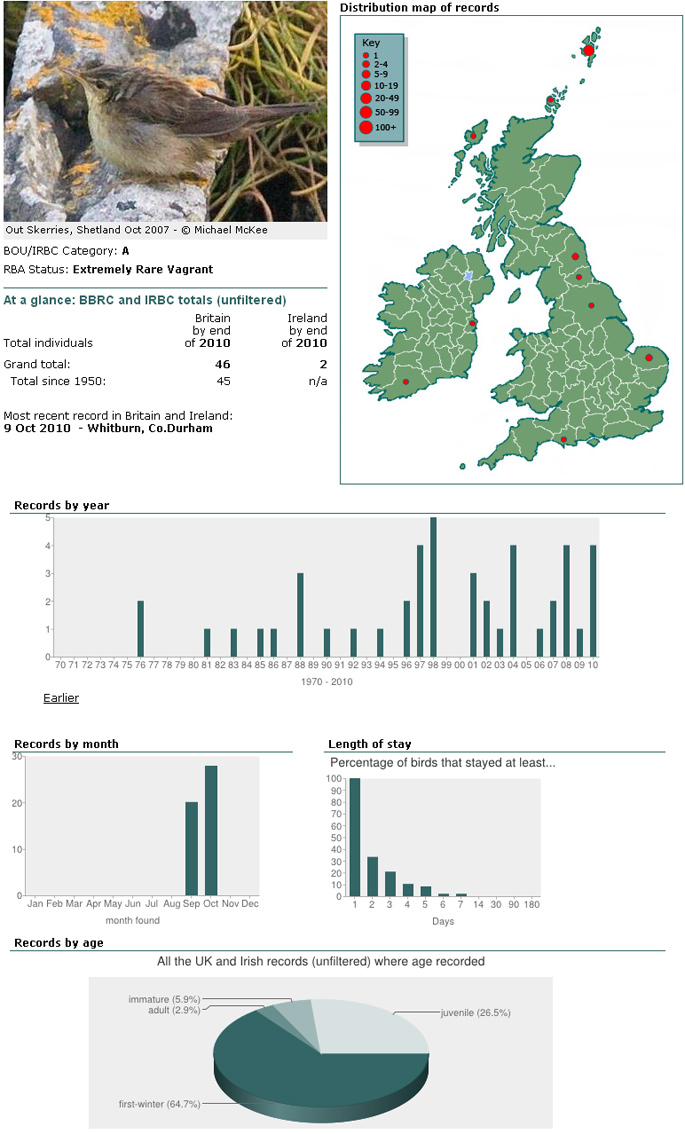
As of the end of 2010, there were 48 accepted records of Pallas’s Grasshopper Warbler, with a spilt of 46 in Britain and two (including the first, in 1908, dead below the lighthouse on Rockabill) in Ireland.
There was a gap of 41 years between the Dublin corpse to the first in Britain, one arriving on Fair Isle in October 1949. The third for Britain and Ireland followed in October 1956, again on Fair Isle. Then came a 20 year gap until the next accepted record, at Cley, in September 1976, with Fair Isle’s third coming just a few days after the Norfolk bird.
Six birds were recorded in the whole of the 1980’s, all on Shetland and all bar one on Fair Isle (including three in a week in October 1988, around Blackburnian time…) while 14 birds were found during the 1990’s.
Within that dozen plus two came Ireland’s second, on Cape Clear in October 1990 and one of the first multi-observed birds (away from Fair Isle) when twitchers arriving on North Ronaldsay for the Yellow-browed Bunting in 1992 were greeted by a ringing bag with a Pallas’s Grasshopper Warbler in it!
Remarkably, one was trapped and ringed at Portland, on the very early date of September 13th 1996 and Fair Isle did the three-in-a-week trick again in October 1998.
A much-appreciated bird on Blakeney Point in September 2001 set the ball rolling for the 2000’s and mainland birds were found at Newbiggin (Northumberland), also in 2001, at Spurn (another early one) on September 14th 2008 and at Whitburn in October 2010.
The four birds mentioned above help to make up the total of just seven mainland records and until September 26th 2012 there had never been a day in which three of these notorious skulkers had been found, not even on Shetland ~ which makes the events of this week all the more remarkable.
But its remains Shetland, and Fair Isle in particular, that dominate the records for the species ~ with 37 of those 48 records found around the islands, 21 of them for Fair Isle (with a one day bird there last year yet to be included in the official stats). Foula has five (included three between October 1st-2nd 2004), Mainland Shetland four, Out Skerries three, Whalsay two, with one each for Fetlar and Unst.
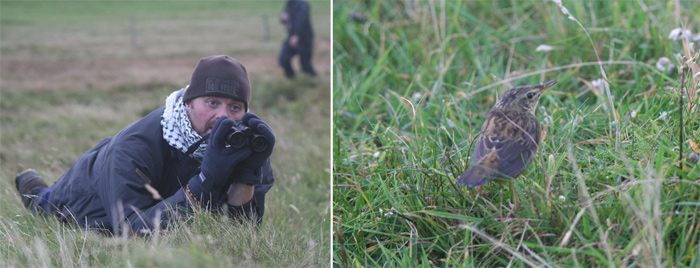
Last week saw the arrival of the Swainson’s Thrush number 30 for Britain, out on Foula. This week, on 2nd, number 31 made landfall at North Bay, on Barra, in the Outer Hebrides.
This will become only the second record of the species for the island group, the first came back in October 1996, near Lochskipport on South Uist. At some point, there may be another found in a more southerly direction and, should there be a mainland record, it will certainly be well received.
Of the 31 British records, just three have been recorded on the mainland ~ one was trapped at Sandwich Bay in Kent in October 1976 with the others both appearing in Cornwall, near St. Just in October 1979 and, also near St. Just, in Cot Valley, for a week in October 1987.
As well as being a very tidy week for the PG Tips, it has also been a particularly good week for American Buff-bellied Pipits ~ the Americans have to have a good week in something don’t they after the incessant “USA! USA! USA! cheers turned to sorrowful tears in Sweet Home Chicago on Sunday night…. ~ at least eight noted, including two on the Outer Hebrides, at least two on Shetland and two more in Ireland.
At least one of last week’s new arrivals on South Uist (Outer Hebrides) was still at Smerclate on 26th, with a new chum to keep it company (was that a new individual or the bird from 10 miles down the road?) and at least one was still on station on the seaweed to the end of the week.
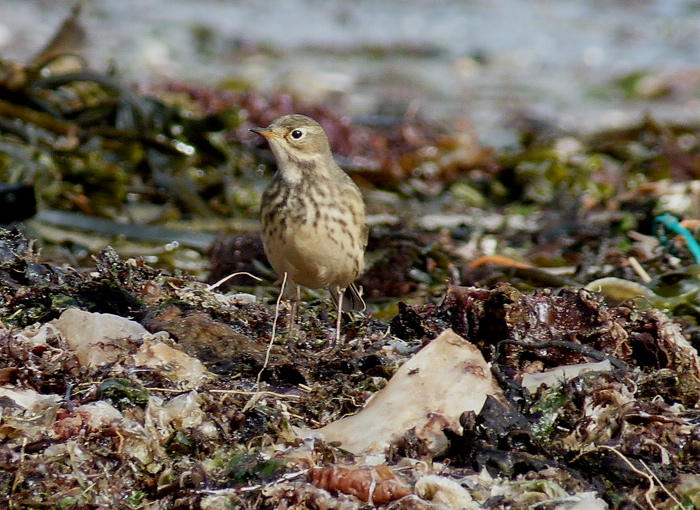
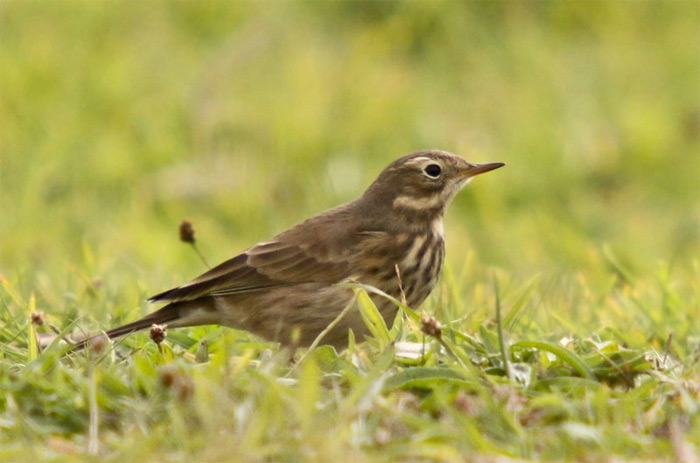
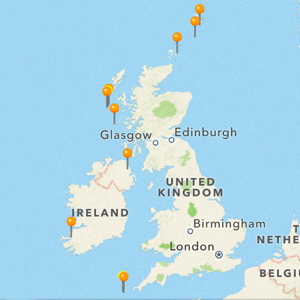
Also on 26th, the sixth Buff-bellied Pipit for Scilly arrived on Peninnis Head, St. Mary’s where it stayed to the following day before (what was presumably the same individual) moved to Giant’s Castle on 29th. Once again it’s thanks to Ashley Fisher for providing some delightful moving action of this really rather lovely long-distance vagrant….
Bird number three of the week made landfall at Ruaig, on Tiree (Argyll) on 27th with number four following the following day at Smerwick Harbour (Co. Kerry), remaining to 2nd.
Not wanting to be left out of course was the, still-on-Cloud-9, birding fraternity on Fair Isle, the island’s fourth (and Shetland’s sixth) Buff-bellied Pipit found there on 29th, with the seventh arriving at Rerwick, on Mainland, on 30th (it or another then appearing a mile or so away, at Scousburgh later the same day, where it stayed to 2nd).
Ireland’s second of the week was another bird to find its feet on 30th, and another one making use of a seaweed larder, this time along the shore of Belfast Lough, at Carrickfergus in County Antrim, becoming the first for the county too.
Although there’s still some way to go to topple 2007 from the rubescens record books (13 birds found then, accounting for over a third of all accepted records), the tally of at least eight birds so far this autumn seems likely to increase further, especially given the weather and, more importantly, increased observer awareness…..
Orkney’s third-ever White’s Thrush was seen briefly in flight around the golf course at St. Margaret’s Hope, South Ronaldsay on 27th ~ the islands’ other records coming in October 1990, a photographed bird on Stronsay, and a three day mid-October bird on North Ronaldsay in 2003.
Up on Foula, the Sykes’s Warbler found last week at Ham was still present for a further four days this week, last reported on 29th. A significantly longer-stayer is the Lodmoor Short-billed Dowitcher ~ still present on 2nd and starting to moult into first-winter plumage as it approaches a month long stay in Dorset.
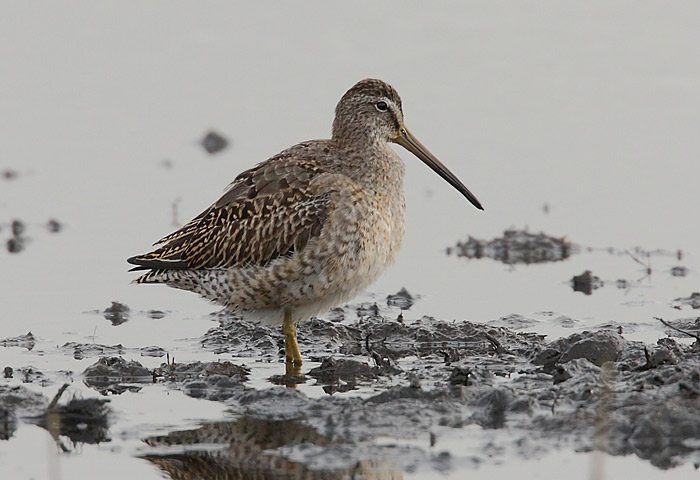
After no news/no sightings for a fortnight, Suffolk’s first Spanish Sparrow popped up again this week at Landguard, seen during the afternoon of 27th. There was a gap of a week between its late August finding and its early September reappearance (and that was with Suffolk listers looking hard for it) so it’s perhaps likely that “sporadic” will be the word employed with regard to this particular bird from here on in….
In Aberdeenshire, an old friend was back at Loch of Strathbeg this week as the Greater Yellowlegs returned on 26th. Earlier this year, at the start of March, this popular bird appeared on site and spent the whole of that month and April and May (with a little trip to the Ythan) at Strathbeg, with its last date there being 27th May (it was in Highland the following day, at Loch of Mey). During the summer the ‘Legs spent a few late July days around St. John’s Loch and now, as autumn arrives, it has come back to Aberdeenshire, and was seen to 29th at least.
….staying in northeast Scotland, the region’s first (and the Scottish mainland’s first, if accepted) Fea’s type-Petrel was seen flying south past Fraserburgh on 26th ~ so far, despite several other claims, the only accepted Scottish records (to the end of 2010) are two birds off North Ronaldsay, one in September 2002, another in October 2010, with the third passing Labost, on Lewis (Outer Hebrides) in August 2007.
Its starting to get a little late in the season for “big shears” but the Atlantic fronts in midweek pushed a tiny handful of birds our way ~ a couple of Cory’s Shearwaters flew past Porthgwarra on 30th with one past Beesands (Devon) the same day, while single Great Shearwaters were seen on the Scillonian crossing on 26th, from a Scilly pelagic on 28th with a further report of one from Portland Bill on 30th (it remains a desperately rare bird in the county, with only recent record ~ photographed in Lyme Bay on the amazing date of February 19th 2009). The last of the week was seen off Porthgwarra on 2nd.
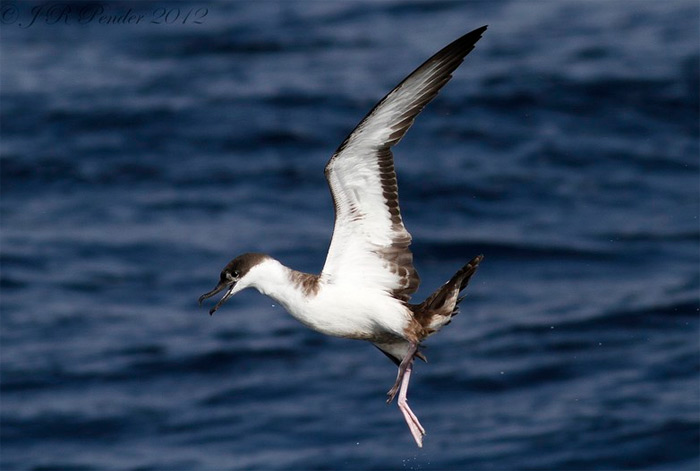
A mightily impressive 207 Balearic Shearwaters flew past Prawle Point (Devon) between dawn and 11am on 26th and was the highest count of the week, although 187 from Porthgwarra on 2nd and 80 from Portland on the same day were also certainly of note. The highest total of Sooty Shearwaters this week was 326 from Start Point (Devon) on 2nd, with 222 off Porthgwarra on the same day, with 115 off Bloody Point (Co. Donegal) on 28th and 50 off Collieston (Aberdeenshire) on 26th also worthy of an honourable mention.
The 26th was the best day of the past seven for Long-tailed Skuas ~ 16 birds noted with six of those heading south past Flamborough Head (East Yorkshire). Five birds were seen on 28th and 29th while there were three birds off Bardsey on 1st. Pomarine Skuas were in pretty short supply, only 35 or so seen, with five off Spurn and four off Flamborough (on 26th) the highest single site counts, along with a further five off Berry Head (Devon) on 2nd.
Only 14 Sabine’s Gulls were reported during the week, with eight on 26th clearly being the most noteworthy day, a total that included three birds from St. Abb’s Head (Borders) and Leach’s Storm-petrels were also in fairly short-supply too ~ around 40 birds recorded with “highs” of seven from Ardvule Point (South Uist) on 28th and eight off New Brighton (Wirral) on 29th. Low numbers was also the theme for Grey Phalaropes too ~ just over a dozen seen, including three from the ferry to Barra on 30th and two from the ferry to Scilly on 2nd. A single Little Auk flew south past Barns Ness (Lothian) on 29th.
A Glossy Ibis continued to flit between the assorted washes of Norfolk and Cambridgeshire during the week, seen at Welney WWT on 28th and then the Ouse Washes RSPB on 29th. Almost inevitably, the second-winter Glossy Ibis was still at Marloes Mere (Pembrokeshire) throughout the week.
On the Outer Hebrides, a Cattle Egret was found at Loch nam Magarlan on North Uist on 26th, and stayed all week to 2nd (could it even have come across the Atlantic?) while two birds arrived at Thurlestone (Devon) on 1st.
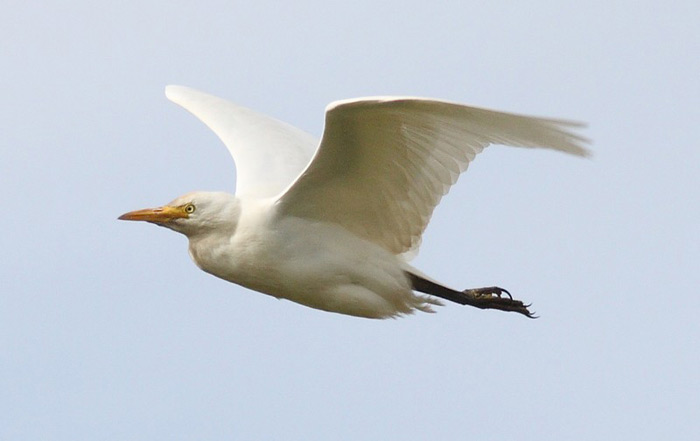
There were a dozen Great White Egrets reported countrywide on 26th ~ including three in Kent (still two at Stodmarsh RSPB) and three in Somerset (two at Ham Wall RSPB and one at Shapwick Heath NNR), with singles in Cornwall (at Kingsmill Lake ~ moving to Colliford Reservoir the following day), Wiltshire (at Cotswold Water Park), Worcestershire (again at Grimley, one was last reported here at the start of September), Cambridgeshire (still on the Ouse Washes) and in Cheshire (back at Burton Marsh, with two more at Parkgate on 2nd). At least three others were seen later in the week (many of the others still in place too), with birds in Essex, Derbyshire and Lancashire.
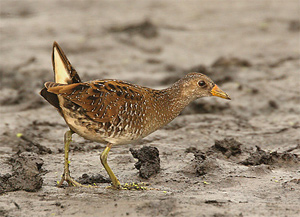
There were 10 Spoonbills each for Middlebere (Dorset) and Titchwell (Norfolk) on 27th with five heading south at Minsmere RSPB on 29th and four remained in north Devon, at Isley Marsh. Two first-winters were at Dungeness on 26th and one remained in South Yorkshire on the same date. Further singles noted were in East and West Sussex, Lincolnshire, Anglesey, Scilly and County Kerry.
The only Common Cranes of the week were reported at opposing ends of Norfolk ~ five still at Welney WWT from 26th-29th at least, while four birds were seen by the roadside near the mill at Horsey on 26th and seven were at Stubb Mill on 2nd.
Down in the far west of Cornwall, two Spotted Crakes were again on show on Marazion Marsh on 27th with one still there on 28th and in Hampshire a juvenile Spotted Crake was at Farlington Marshes HWT on 30th. The Greylake Spotted Crake was seen again on 1st ~ it was last reported there on 21st. The only Corncrake for the round-up was one seen along the main road out of Salcombe, in south Devon on 30th.
In Somerset, the eclipse drake Lesser Scaup was still finding the waters of Chew Valley Lake to his liking this week, still present from 26th-2nd. The drake Ferruginous Duck at Far Ings NR in Lincolnshire was still in place on 28th and in South Yorkshire, the drake Ring-necked Duck at Orgreave was seen between 27th-29th.
A drake King Eider was seen off Burghead (Moray) on 29th and the only Surf Scoter this week was a drake seen at Olna Firth on Mainland Shetland on 30th-2nd.
On Orkney, a Snow Goose was at the Bay of Suckquoy on 26th while a Black Brant was at Ballykelly (Co. Derry) on 27th (following a Brant at Castle Espie, in County Down on 23rd). A hybrid Black Brant X Pale-bellied Brent was seen at Newtonards (also in Down) on 30th and amongst the significant numbers of hrota Brents were a family party of Gray-bellied Brants.
Grey-bellied Brant is one of four “Brent Goose” populations that breeds in Arctic Canada and this curious, and still mysterious “almost-a-form” breeds only on Melville, Borden and Prince Patrick Islands (collectively, the Parry Islands), in the western Canadian High Arctic, with Black Brants to the north and Pale-bellied Brents to the west ~ and it is these birds that winter, largely, in Ireland ~ and winters in parts of Puget Sound, in the far northwest of the United States.
In world terms, this is a rare bird (a 2004 population estimate suggested between 5,000 to 7,000 birds) but its taxonomic status remains a mystery. Work carried out, over 20 years ago, in to the mitochondrial DNA of the form-without-a-name suggested that (despite a small sample) Gray-bellied Brant was morphologically distinct and genetically separate from other types of Brant. The DNA was said to be unique and they’ve been isolated from Pacific Black Brant for 400,000 years.,…
More work needs to be done, and is, apparently, still being conducted, but there’s an awfully long way to go before any sort of resolution is forthcoming with what a Gray-bellied Brant really is. And then there’s just how to identify them safely….they are notoriously variable.
….the wheels will continue to turn for this most enigmatic of geese but, let’s not forget, that the markedly different Black Brant (both nigricans and orientalis) and Pale-bellied Brents are still considered to be just forms of Dark-bellied Brent. Hmmmmm…..
Some 11 Honey Buzzards were seen during the week, including twos over the cliffs at Portland on 29th and over the A14 in Cambridgeshire on 30th, along with singles from Cornwall to East Yorkshire between 28th-30th. At such a cross-over time of year, it wasn’t too much of a surprise to hear of a few Rough-legged Buzzards this week ~ on 26th, one flew over Angler’s CP (West Yorkshire) with one heading, over Unst, the following day. These two were followed by further singles in Yorkshire, one in the South, at Langsett Reservoir on 29th, the other in the East, over Grimston on 1st.
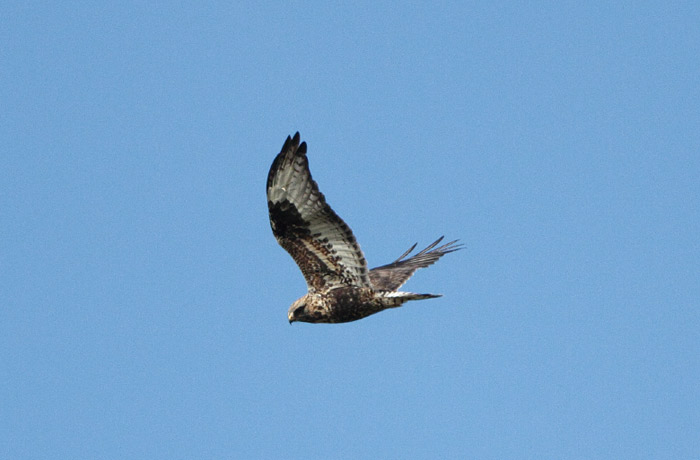
After two or three weeks of very tidy showings, we were down to just a single Semipalmated Sandpiper this week, a new juvenile appearing at Tacumshin (Co. Wexford) on 27th.
The first Baird’s Sandpiper for the Farnes was found on Brownsman Island on 26th while four of the five White-rumped Sandpipers this week were in Ireland ~ one was at the Gearagh (Co. Cork) on 28th, with another on the Rogerstown Estuary (Co. Dublin) the same day, where it stayed to 30th. In Wexford, last week’s new arrival at Tacumshin was still present on 29th and one was found in amongst roosting waders at Belmullet (Co. Mayo) on 2nd. Britain’s only bird this week was a juvenile at Breydon Water (Norfolk) on 28th.
A new juvenile Spotted Sandpiper was found on Mainland Shetland, at Voe on 30th and will be the ninth record for the islands, and the fifth recorded since the start of the 2000’s. The bird remained in place to 2nd.
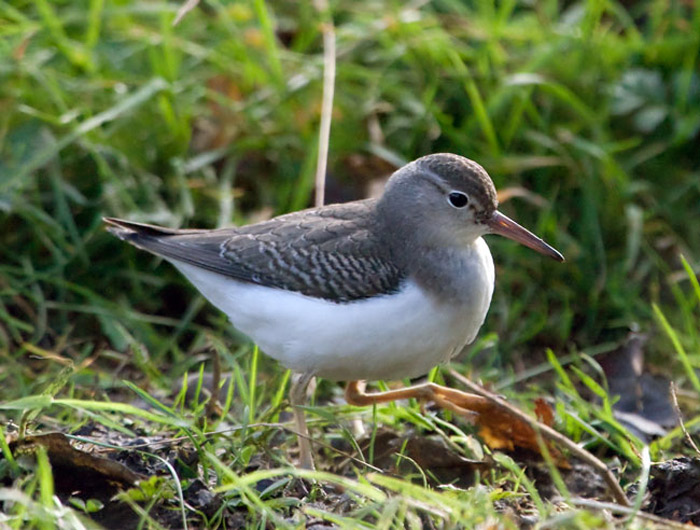
If there were fewer Semip’s, Baird’s and White-rumps to play with this week, there were still a decent number of American Golden Plovers ~ 17 or so still up for grabs, or newly arrived, over the past few days.
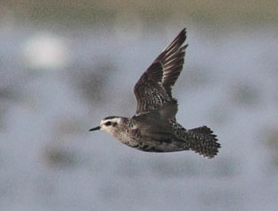
Six or seven birds were still spread around the Outer Hebrides, a new juvenile landed at Borgh, on Barra, on 26th (remaining to 29th at least) with others at Linclate, Benbecula on 28th, Eoropie, Lewis on 29th-1st with two (an adult and a juvenile) at Solas, North Uist on 30th and an adult at Balivanich, Benbecula on 2nd.
Brief birds were noted at Fleetwood (Lancashire) on 26th and Red Rocks (Wirral) on 27th, when a juvenile was seen at Davidstow Airfield (Cornwall). Adults on 28th were at Drumburgh (Cumbria) and Tacumshin (yet another new one!) and on 29th, an adult appeared at Veensgarth on Mainland Shetland, with one still on North Ronaldsay on the same date (two were still there on 26th). Three birds were found in County Mayo on 30th, an adult at Trawmore Bay and two juveniles on Annagh Head with the 1st seeing a juvenile make itself known on Tiree.
There were also plenty of Buff-breasted Sandpipers to try and catch up with (although you generally needed to be on an island…) with around 20 birds noted this week. Two birds were still at John Muir CP (Lothian) to 27th and two more remained at Loch of Strathbeg to 28th. In Ireland, three Buff-breasts were at Myroe Levels again on 28th-29th (with possibly two more there over the weekend) while singles were seen in Wexford (at Tacumshin, naturally), Mayo (at Trawmore) and Kerry (at Black Rock Strand).
Two singles were seen in Cornwall (at Davidstow and Nanjizal) and there was one each for St. Agnes and St. Mary’s (though it could well have been one hopping from west to east). Norfolk scored on 28th, one at Happisburgh for the day, and singles were seen on South Uist, North Ronaldsay and Mainland Shetland.
Down in Somerset, a Buff-breasted Sandpiper was found on Curry Moor on 1st by birders looking for the Lesser Yellowlegs that had spent 29th and 30th on site (only the fourth record for the county, the last coming in 2006, before that it was 1997, 1984 and 1967 ~ all of them autumn birds). Whether it was the same Lesser Yellowlegs that had been at Kingsmill Lake in Cornwall until 28th remains to be seen (the Cornish bird isn’t reported daily). In Scotland, a Lesser Yellowlegs was identified on its second day at Carrick Point, on the Isle of Bute (Argyll) on 2nd.

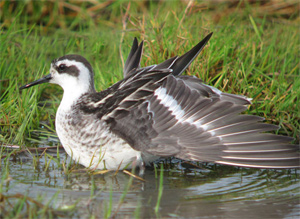
Further newbies this week were Long-billed Dowitchers in Cumbria (at Drumburgh on 27th) and in Northumberland, initially on Holy Island, from 28th. The latter bird, a juvenile, then moved some 40 miles or so down the coast to Cresswell Ponds NWT on 30th, taking another trip, to Hauxley this time, later the same day before heading back to Cresswell on 1st. A new adult Long-billed Dowitcher was found at Burton Mere (Cheshire) on 1st ~ it will be the 11th for the county once accepted ~ while in Gloucestershire, the long-staying adult at Slimbridge was seen to 29th, going missing the following day, only to appear a few miles down the road (still alongside Icelandic Black-tailed Godwits) at Walmoor Common also on 1st.
Back at the famous WWT reserve, a juvenile Red-necked Phalarope showed from 27th-2nd, occasionally performing well, with another, on private land, in Lincolnshire, on 2nd. Dotterels this week were all singles ~ one remained on Tresco to 27th and another arrived on St. Mary’s on 29th. In the Lancashire uplands, a Dotterel was on Pendle Hill on 27th-28th while a little further north, in Cumbria, another was at Skiddaw on 29th. The final bird of the week was found at Polgigga (Cornwall) on 28th.
Rounding off shorebird corner, is Pectoral Sandpiper ~ 28 of which were reported during the week. Three were on Exminster Marshes RSPB (Devon) on 28th (with another in the county, at South Huish on the same day) and three were on South Uist on 2nd, while two remained at Sandwich Bay (Kent) to 27th. Two singles were seen six days apart at Titchwell RSPB (on 26th, then 1st) and inland singles were in Bedfordshire and Berkshire. In Ireland only four birds were noted, two in Wexford (at Cahore and Tacumshin) and two were together at Derrybeg in Donegal on 29th.
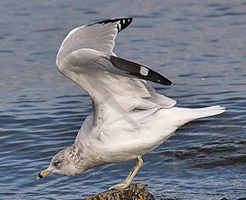
Shetland’s fourth-ever Bonaparte’s Gull, a first-winter was reported from Burrafirth, on Unst, on 30th ~ the most recent record was a photographed adult at Tingwall for a day in July 2005 with a first-summer at Loch of Spiggie in May 1987 and a 17 day adult on Fetlar in the summer of 1982 being the only other accepted records for the islands. In County Antrim, the adult Bonaparte’s Gull was seen again at Larne on 2nd.
The third-winter Ring-billed Gull remained at Groomsport (Co. Down) for much of the week, with the adult still at Portrush (Co. Antrim) over the weekend. In Cork, at Cuskinny Marsh, an adult Ring-bill was seen on 30th and the adult in Scotland, at Kinneil Lagoon was present to 1st.
Ireland also hosted five of the week’s six Glaucous Gulls (one each for Antrim, Kerry and Waterford, with two in Cork ~ the other was seen on Foula) while the only Iceland Gull of the week was seen over the golf course at Portrush on 27th. Further south, at Tacumshin, what seems to be Ireland’s first-ever September Kumlien’s Gull, a near-adult, was seen on 29th.
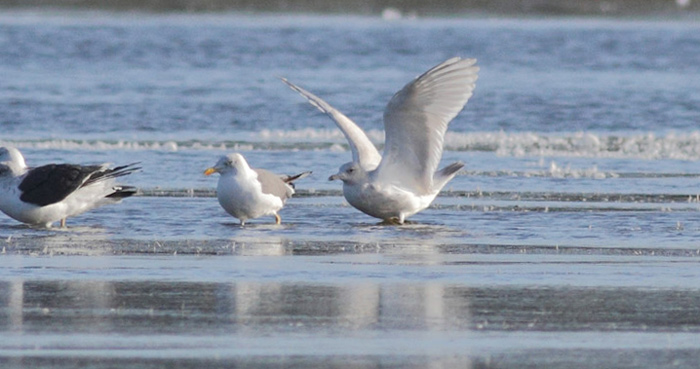
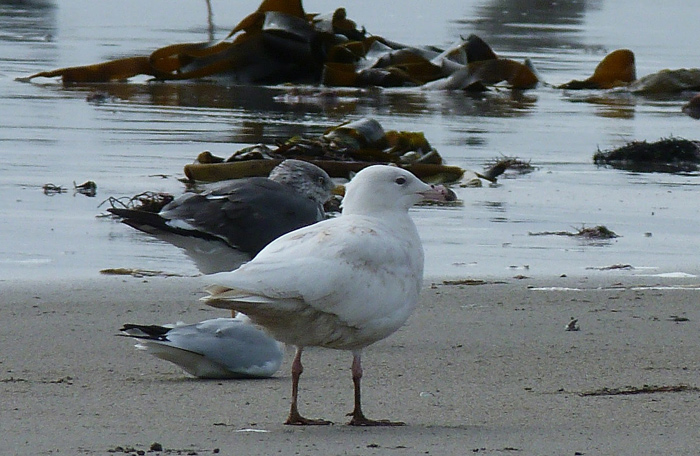
In County Louth, the adult Forster’s Tern at Soldier’s Point remained to 1st.
Shetland scored two more Pechora Pipits this week ~ hot on the heels of the bird seen last week on Out Skerries came single birds on Unst on 30th-2nd and on Fair Isle on 1st-2nd, taking the Shetland haul up to 82 birds.
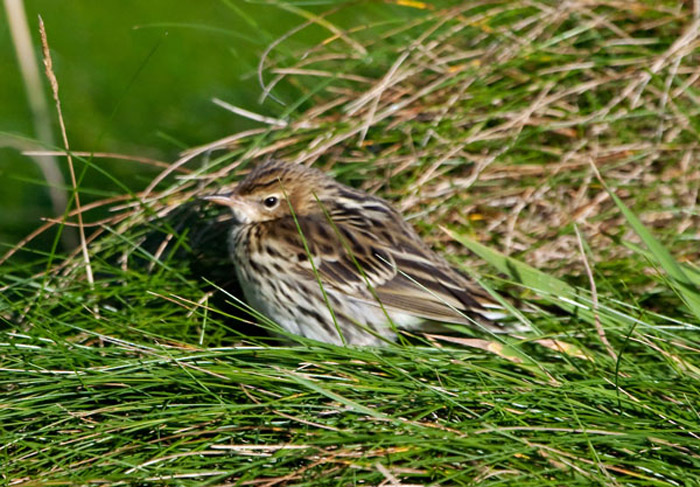
Fair Isle has an incredible tally of Pechoras ~ the first 10 British records (from the first in September 1923 until the tenth in 1971) were all found there and since then a further 33 have followed, taking the grand total for that particular small outcrop in the ocean to a staggering 43 birds. Wowsa….!
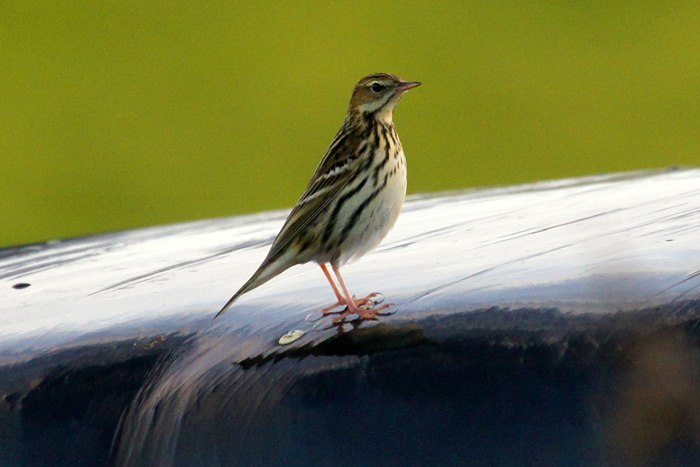
Red-flanked Bluetail was a brief mention in despatches at the end of last week’s round-up, the lack of records so far this autumn (given what else was occurring) was something of a surprise. Right on cue though, one of these delightful little birds popped up at Skaw, on Whalsay, on the afternoon of 27th. This is the 29th record for the islands but until something changes, this could be the poorest year for the species since 2004 ~ just one bird recorded that year ~ on Fair Isle on September 29th.
The first Isabelline Shrike of the year arrived on Shetland’s south Mainland, at Toab on 27th, where it remained to 30th (reappearing on 2nd) while birders on the islands could also chance their arm at three more Lanceolated Warblers ~ singles were on Fair Isle on 26th and 2nd, with another on the Shetland mainland, at Sandness, on 27th. The fourth Lancie this week was found on North Ronaldsay on 26th and that bird remained to the following day.
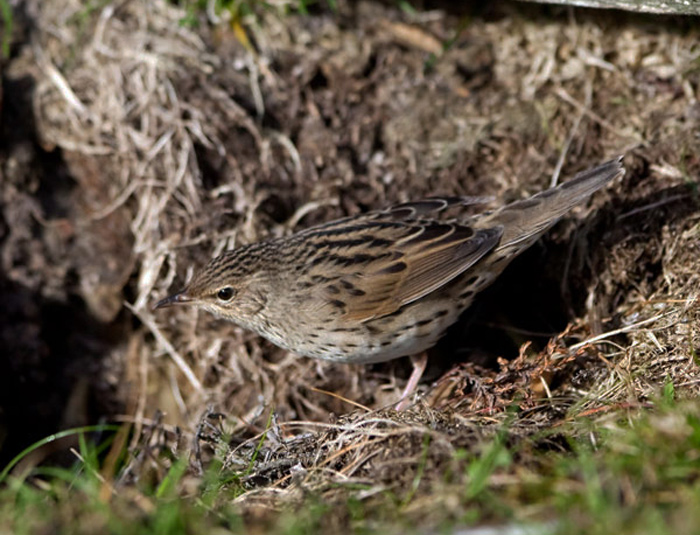
Despite the remarkable number of records for Shetland, nearest neighbours Orkney has only four accepted records until the end of 2010, three of them since the start of the 2000’s (two on North Ron, one for Sanday) with the first for the islands appearing at Pentland Skerries way back in 1910.
On Fair Isle, the Paddyfield Warbler seen at the end of last week’s review period remained to 26th with it, or another, (re-)surfacing on 1st. The same island also hosted at least two Blyth’s Reed Warbler this week, one present there from 26th-28th then two different birds were seen on 29th, with perhaps one of these still in place to 2nd.
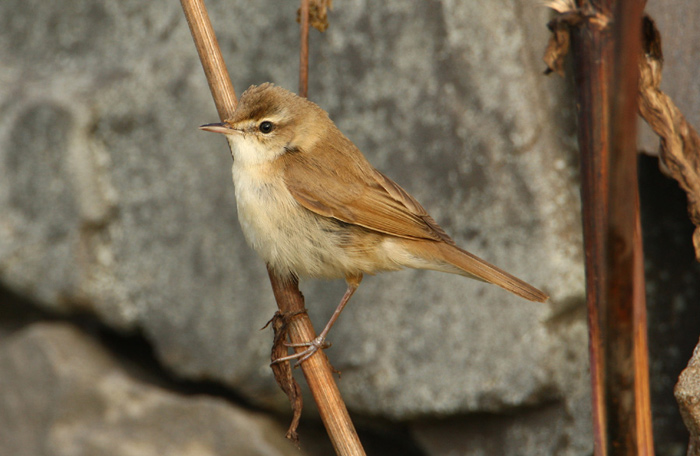
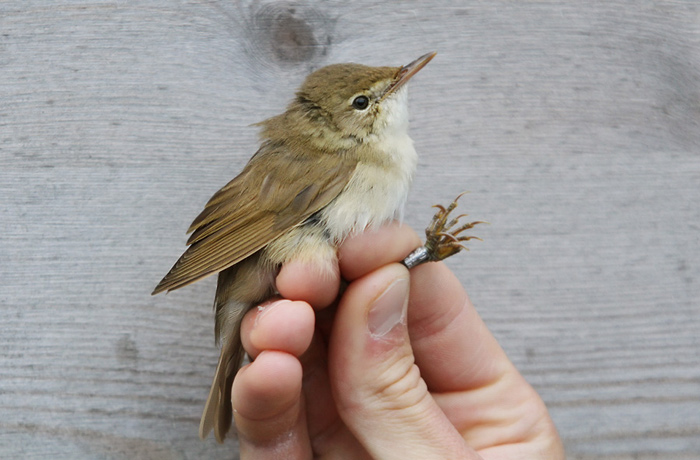
Elsewhere on Shetland, further BRW’s were discovered on Unst, at Halligarth, on 26th and Collafirth on Mainland on 29th while on Foula, one spent the week on the island, still in place on 2nd. The sixth Blyth’s Reed of the week was found at Bornish, on South Uist on 26th and, although elusive, it remained to 2nd (for what could be just the fourth record for the islands as a whole). Bird seven spent a little bit of time at Barns Ness (Lothian) on 28th completing an impressive seven day haul for the species.
As if you needed to guess where we’d go next, it was back to Shetland for two of the three Booted Warblers seen this week ~ one was found at Clibberswick, Unst on 27th with another at Gunnista, Bressay on 29th. The third of the week was the often-harassed bird along the seawall at Burnham Overy (Norfolk) reportedly still present on 27th.
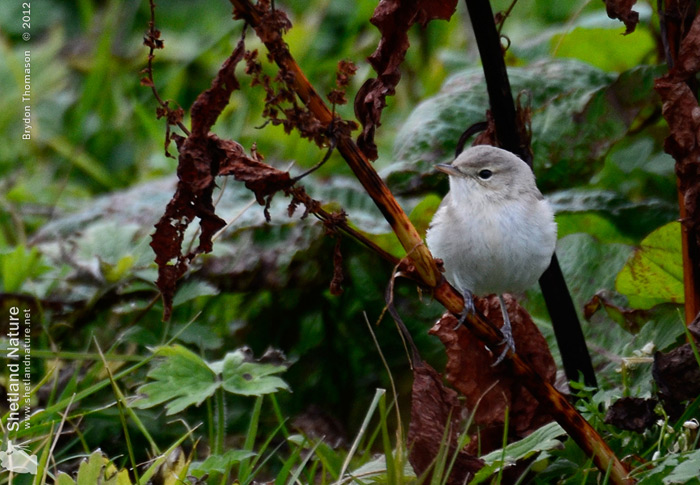
While we’re talking all things Shetland, we may as well bash through the other star passerine turns on the islands this week ~ it may give somewhere else a look in later….(!) ~ so let’s start with Olive-backed Pipits, eight of which were seen around the place this week.
On 26th, singles lingered from last week on Fair Isle and Foula, with a new bird on Yell, at Midgarth. Three new arrivals were uncovered on Mainland on 27th, at Quendale, nearby at Hestingott and also at Easter Quarff. On 28th another new bird was at Lower Voe, while on 29th two birds were on Fair Isle. Elsewhere, OBP’s this week were found at Whitburn on 28th and, prior to that, at St. Margaret’s Hope, on South Ronaldsay, on 26th.
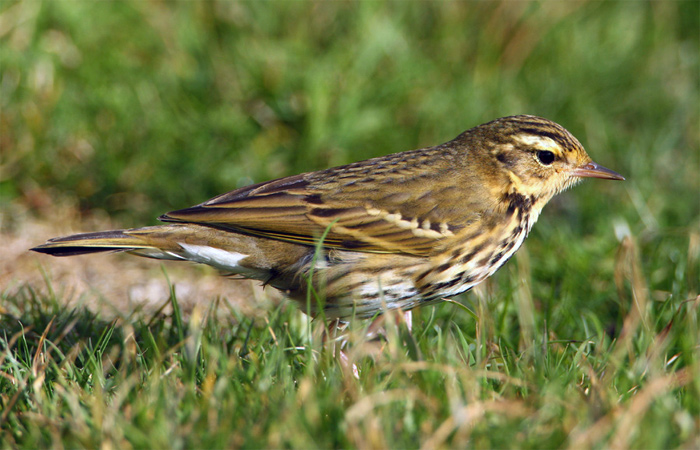
Two neat Siberian Stonechats were found on the islands, on 27th at Hoswick (on Mainland) and at Mio Ness, on Out Skerries on 1st. Another Siberian Stonechat made it to southwest Ireland, found at Firkeel in County Cork, also on 1st while one was at Dumpton Gap (Kent) on 27th.
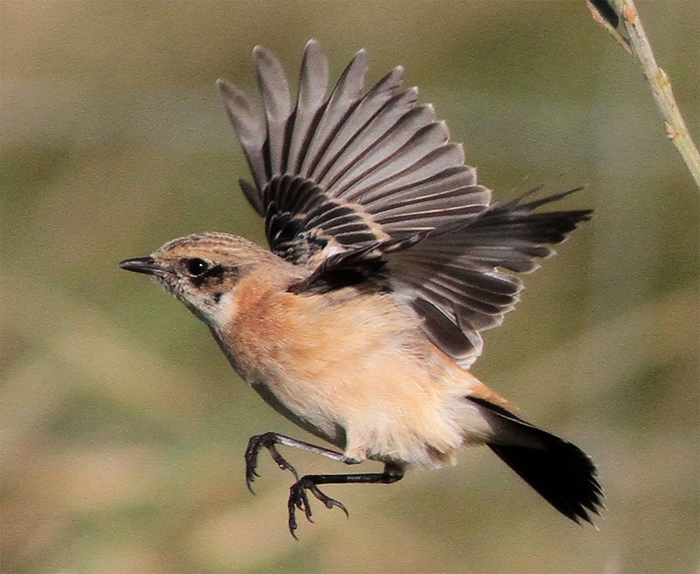
A dazzling Hornemann’s Arctic Redpoll plopped down on Unst, at Norwick, on 28th where it remained to the end of the week (along with several “Northwestern” Redpolls) while Fair Isle was treated to four Little Buntings on 26th (there will be more on the small Emberizas later…..) and Arctic Warblers on 27th and 2nd. Foula hosted a Little Bunting on 2nd.
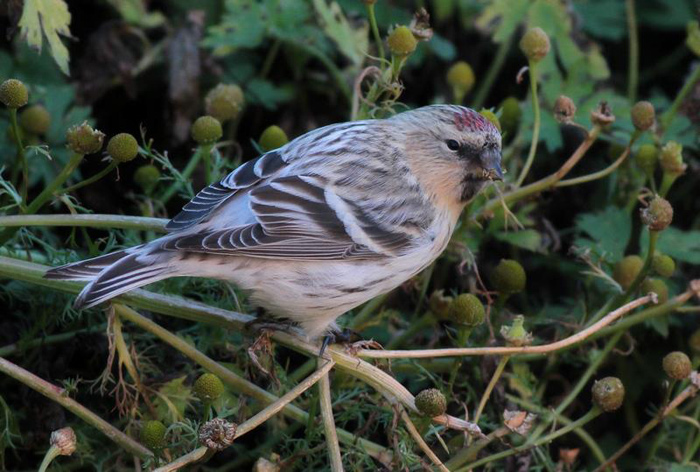
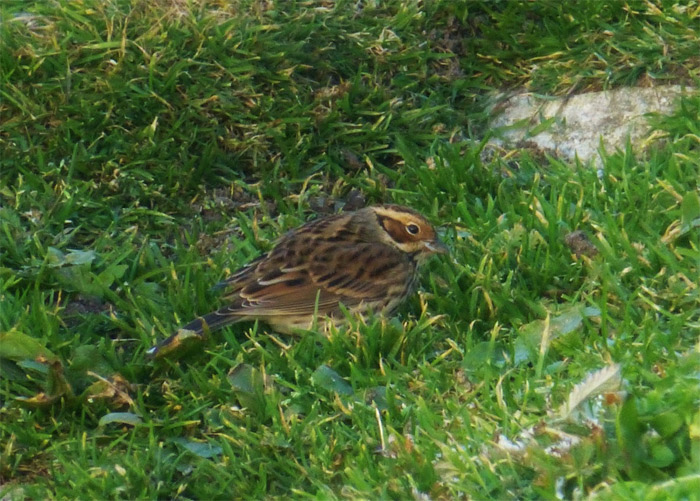
Two further Arctic Warblers were seen during the week, one showed well on Holy Island from 26th-29th with another surfacing on St. Mary’s (Scilly) on 27th.
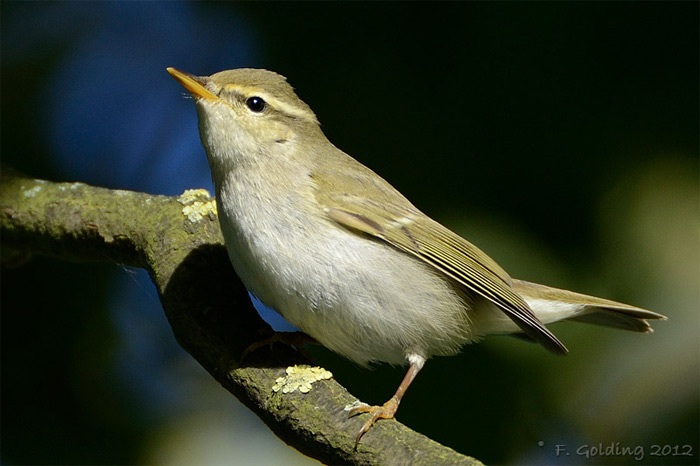
Four Greenish Warblers were spread across Yorkshire on 26th ~ in the North singles were at Filey and Long Nab, Burniston, while the East hosted birds at Kilnsea and Flamborough. In Norfolk, the East Hills Greenish was still present on 26th and the sixth bird of the week spent three days at Kingsdown (Kent) from 29th-1st.
Scilly’s third Western Bonelli’s Warblerof the autumn (and the second in a week) was on St. Martin’s on 1st-2nd, while the Aquatic Warbler. remained elusive around Porthloo Duckpond from 26th-29th. The only Melodious Warblersof the week were also on Scilly, one on Gugh on 29th with another on Bryher the following day.
Just under 30 Barred Warblers were recorded during the week, with Shetland laying claim to around a third of them ~ spread across Mainland (half a dozen or so there), with singles on Unst, Yell, Bressay and Fair Isle. Two birds were in Highland this week, with further doubles for East Yorkshire, Norfolk and Scilly, while one made it across the coast to North Wales, arriving on Bardsey Island on 29th.
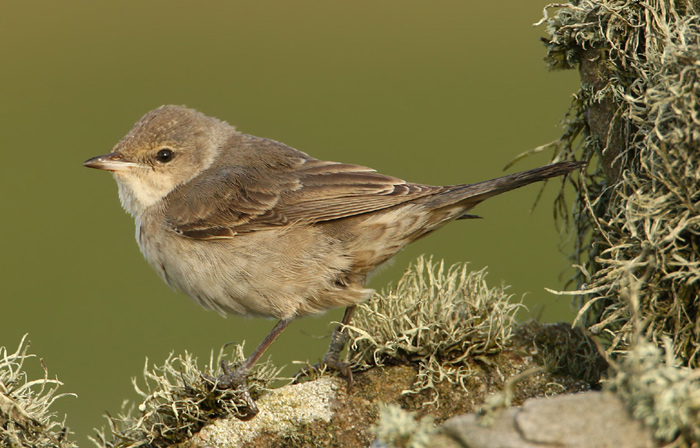
It was another excellent week for Red-breasted Flycatchers ~30 seen including 14 birds on 26th, with four in Northumberland and four in East Yorkshire (including two at Kilnsea) and the adult male still at Loch of Strathbeg RSPB. Nine new birds were found on 27th, including two for Scilly, two for Shetland and two at Seaton Carew (Cleveland) and further birds for both Scilly (two more there) and Shetland followed as the week drew to a close, with two birds also noted on the Outer Hebrides too.
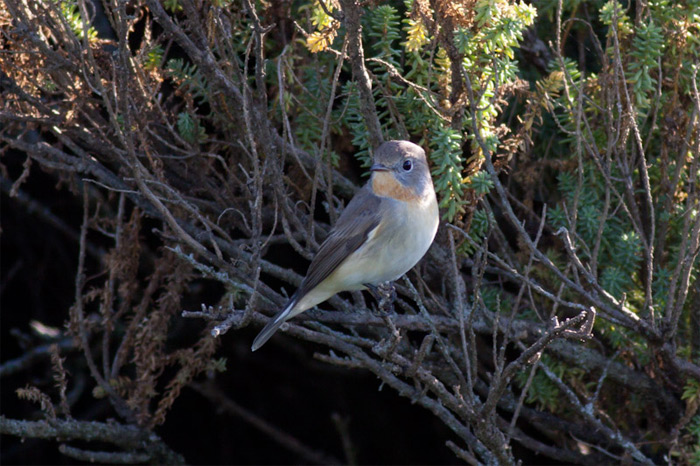
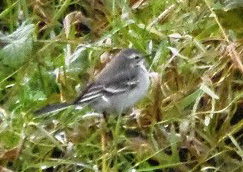
The very snazzy first-winter Citrine Wagtail lingered on Tresco to 26th and new birds were found at Loch a’ Phuill, Tiree on 27th (it stayed to 29th) and at Titchwell (Norfolk) on 28th. Only two Bluethroats were seen this week, at Fife Ness on 27th and Fair Isle on 29th and 1st. Single Red-throated Pipits were found at Davidstow on 28th and over the Calf of Man on 1st while flyover Tawny Pipits made it to Devon (over Dawlish Warren) and Norfolk (one or two reported near Gramborough Hill, Salthouse).
Richard’s Pipits were rather more abundant ~ the week started with two on Fair Isle on 26th and was followed by four on 27th (including two in Northumberland), two on 28th (in Pembrokeshire and Norfolk), two on 29th (both on Shetland) on 1st when a new bird was found at Porthgwarra and on 2nd, further singles were seen on Fair Isle and Fetlar.
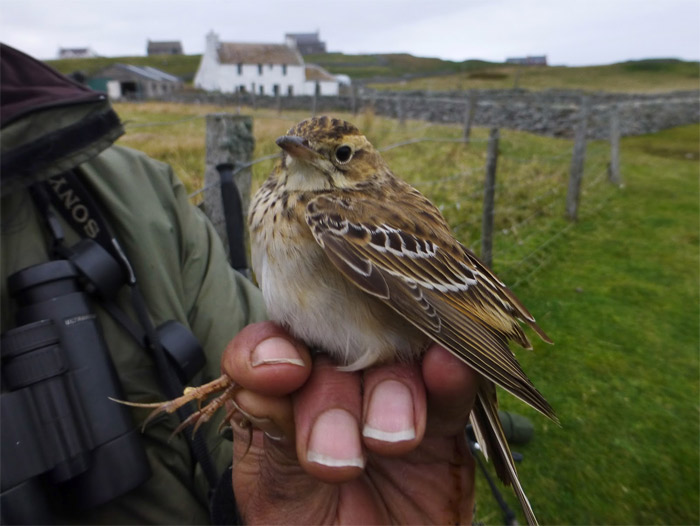
Three Great Grey Shrikes arrived on 26th, two of them in Northumberland (at Tynemouth and on Holy Island) with the third of the day appearing at Flamborough Head. Two Red-backed Shrikeswere reported at Spurn on 26th and made up a weekly tally of eight birds ~ singles elsewhere included two for Shetland (Fair Isle and Mainland), on Barra (Outer Hebrides) on 27th, on Portland from 28th, on the Lizard on 29th-2nd, at Firkeel (Co. Cork) on 1st-2nd and on Great Orme (Conwy) on 2nd.
A Hoopoe at Brighton Cross (Cornwall) on 28th was the first of just two sent his week, the other coming to a garden in Tonbridge (Kent) on 1st. The total of 24 Wrynecks included 12 birds from Dorset west to Scilly (three in Dorset, two in Somerset, three in Devon, two in Cornwall and two on Scilly itself), with others noted from Pembrokeshire to Lothian.
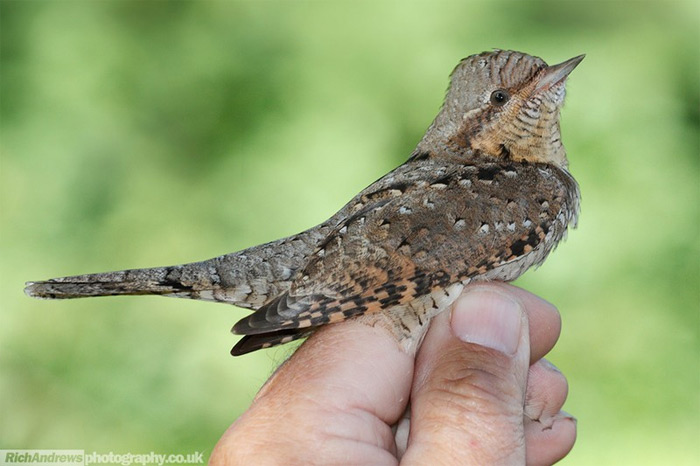
In Wexford, at Tacumshin, a Short-toed Lark was seen on 29th while eight Common Rosefinches was something of a drop from last week ~ three were on Shetland (on Foula, Out Skerries and on Mainland), one was still on Lundy at the start of the week, with others at Whitburn, Scilly and Northumberland with, perhaps the pick of the bunch being the bird seen in Gloucestershire, at Frampton-on-Severn on 27th.
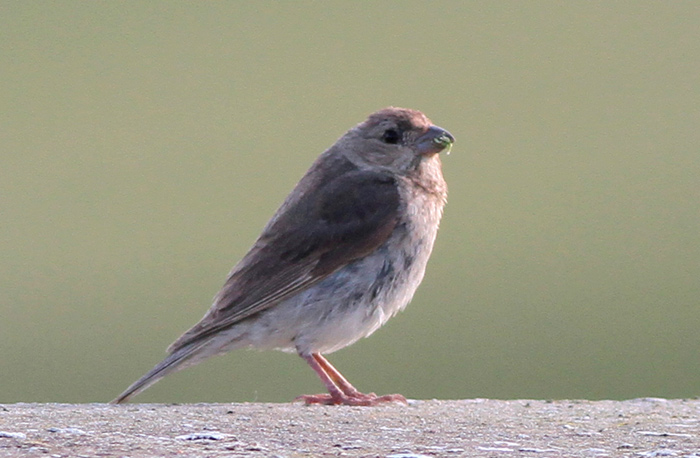
Two Ortolan Buntings were on Portland on 26th and a third Dorset bird on the same day was at Christchurch. The showy bird in Hugh Town, on St. Mary’s was still present to 30th, when a second bird was found on the golf course. In County Cork, singles were found at Knockadoon Head on 29th and at Lissagriffin on 1st-2nd.
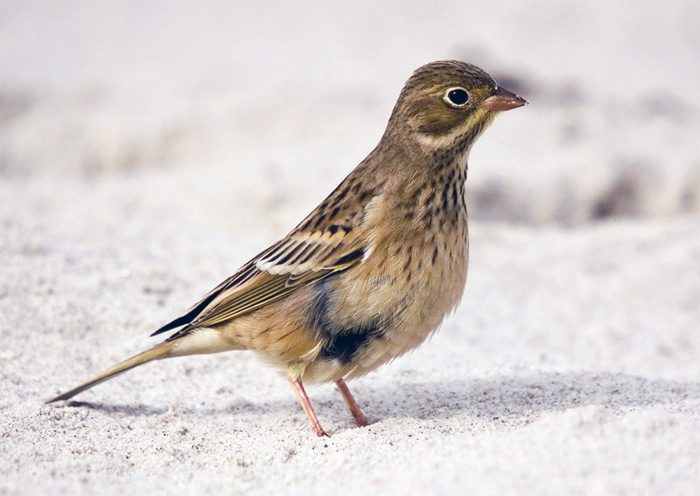
As well as the already-mentioned quartet of Little Buntings on Fair Isle, further Shetland birds were found on 26th (three birds ~ two for Mainland and one for Unst), on 27th (a new bird on Unst and another new one on Mainland, at Kergord) and on 28th (the 10th of the week for Shetland ~ on Fetlar). Away from the bird-filled islands, two Little Buntings were seen on North Ronaldsay on 27th with singles in Gwynedd, Cleveland and Aberdeenshire on 26th, in Dorset (at Portland) on 27th and in South Yorkshire, trapped and ringed at Agden Reservoir on 29th.
Two juvenile Rose-coloured Starlings were on Scilly between 27th and 2nd (one on St. Martin’s, one on St. Mary’s) while last week’s youngster in Norfolk was seen at Titchwell on 26th with a new juvenile on the same date, at Easington (East Yorkshire). Another new bird was seen in Hampshire, at Hayling Island and nearby Northney on 28th and in neighbouring Dorset, at Burton Bradstock, on 30th.
Finally, to one of the underrated stars of last week ~ Yellow-browed Warbler. The rush of these cracking Phylloscs., really was something to marvel at and the push seemed to continue in to the new round-up period too. Some 220 were seen this week (there is obviously the chance of doubling up from time to time, but that’s the rough estimate) and it was Shetland that dominated once again. From a tally of some 110 in Scotland, Shetland scored at least 75, spread across nine islands. Mainland Shetland faired best, at least 35 recorded there, with 11 on Whalsay on 26th being the highest count for a single spot this week.
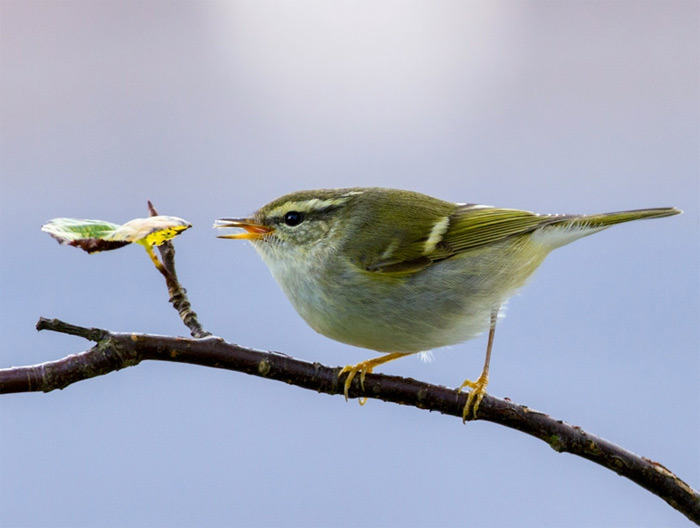
On Orkney, at least 16 birds were seen while dropping down the east coast, around 50 birds were seen between Northumberland and Lincolnshire, with double figures recorded in both the counties mentioned above (14+ for the former, 10+ for the latter) with East Yorkshire scoring 14.
In East Anglia, at least 18 Yellow-browed Warblers were seen, including seven in Great Yarmouth cemetery on 26th. Two birds made it inland, to Nottinghamshire and Staffordshire, while four were seen in the northwest of England and North Wales (including a popular bird on the Isle of Man), with two reaching the southern half of the Principality. Just three birds were noted in the southeast of England, while in the southwest, around 20 birds appeared, 13 of them on Scilly.
In Ireland, seven birds were picked up, including three on The Mullet (Co. Mayo) on 28th.
Another week chalked off and now October is let loose on its own. There are any number of possibilities for the first few days of this fabled month, so we’ll keep it short and sweet here….
....it could be unfeasibly great….
….it could be a supreme let down….
….one things for sure though, its game on….
Mark Golley
03 October 2012




